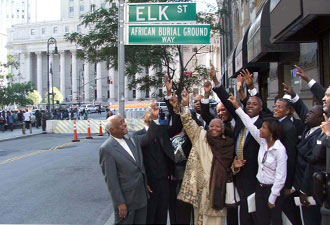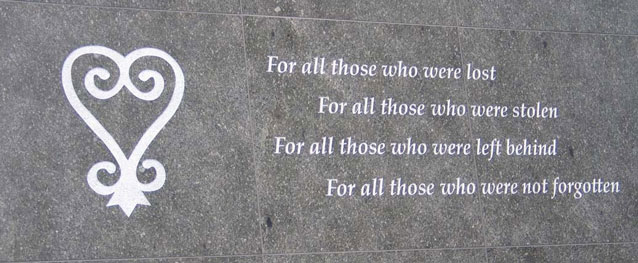The “City That Never Sleeps” is constantly reinventing itself. Buildings designed with one intention become something else; old structures give way to new, and neighborhoods regenerate. But sometimes something happens that causes New York City to stop and reflect on its history.

NPS Photo
In 1991, the African Burial Ground was unearthed during the construction of a new federal office building in lower Manhattan. This graveyard, which had been covered up and forgotten as the city expanded north toward Harlem, covered roughly 6.6 acres. It's believed to contain the remains of between 15,000 and 20,000 enslaved and free Africans and African Americans interred between the 1690s and 1794.
The rediscovery of the burial ground galvanized the African-American community and local, state, and federal representatives. Their efforts to have the site permanently recognized led to creation of African Burial Ground National Monument, which tells the complex tale of the African presence in the early days of New York City.
African Burial Ground National Monument invites schools, neighbors, and tourists to explore its visitor center and museum to gain an understanding of the long and extraordinary story of the site before visiting the outdoor memorial. The museum’s permanent exhibits reflect on the history of the site and early Africans' contributions to New York, the archeology of the burial ground, and the process by which it gained national park status.
The memorial honors all who were buried in the larger burial ground (now a designated National Historic Landmark) and is the final resting place for the 419 men, women, and children whose remains were disturbed by construction of the federal office tower.

NPS Photo
The memorial honors all who were buried in the larger burial ground (now a designated National Historic Landmark) and is the final resting place for the 419 men, women, and children whose remains were disturbed by construction of the federal office tower.
The outdoor memorial is deeply moving, taking visitors on a symbolic journey through the heart of a slave ship, across the ocean to a distant shore where they learn some of what is known about a few of the 419 people buried on site. It is a sacred space in Lower Manhattan, where people gather periodically to make ceremonial offerings to these unknown—but no longer forgotten—ancestors.
The park, easily accessible by public bus or metro, offers an array of programs throughout the year, ranging from thoughtful observances of Juneteenth and Martin Luther King, Jr. Day to joyous Kwanzaa celebrations. During National African American History Month, the park shows films, presents an array of ranger-led talks, and offers engaging family-friendly programs.
Walking tours take place during the summer months and curriculum-based educational programs during the school year. In addition, children of all ages can become African Burial Ground National Monument Junior Rangers anytime.
Last updated: August 14, 2017
